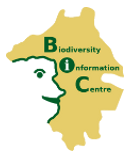Inhabited enclaves of a long history
within Mabira Forest
Forest surrounding
|
The Mukono District is one of the most densely populated districts in Uganda. However, the average forest-adjacent population density accounts to 302 inh./kmē (2002). Most heavily populated is the area between the forest and the River Nile, while along its southern half the forest is bordered by large-scale sugarcane plantations leaving hardly space for the otherwise common subsistence farming. There are also tea plantations. Many employees of the sugar business live in the town of Lugazi. Njeru facing Jinja from the western shore of River Nile is another population centre. Traditionally the area used to be settled by the Baganda. Today a very diverse ethnic mix is found due to immigration. Ten smaller forest reserves in the area are completely missing forest cover nowadays. And the eastern one third of Mabira CFR is ever again threatened by the wish to extend the sugar business.
Tourist attractions Tourists normally pass the forest when heading for the source of Victoria Nile at Jinja (only 8 km away) or on their way to Kenya and Tanzania. A short walk or drive leaving the Jinja to Kampala highway in Najjembe brings the visitors to an information centre for tourists and outreach and overnight facilities (campsite and bandas). An ecolodge is found on the opposite site of the road on the way up Radio Hill. It is in the area close to the road where most of the walking trails are placed. More distant attractions are the Griffin Falls and another hill for a view across the forest. Much of the forest itself remains difficult to access by visitors. Here, MAFICO as a CBO promoting environmental education and ecotourism is a good anchor point to find out more; maybe also in regard to the 'holes' in Mabira Forest being populated enclaves with a long history and relation to the forest and allowing to experience forest life and village life next to each other. Mabira Forest has been studied within the BIOTA East Africa project as a comparison site to Kakamega Forest being similarly disturbed although for different reasons. For more information see also the Web sites of Mabira Forest Reserve and NFA. |
|
1 / 2 |



 Activities
Activities




